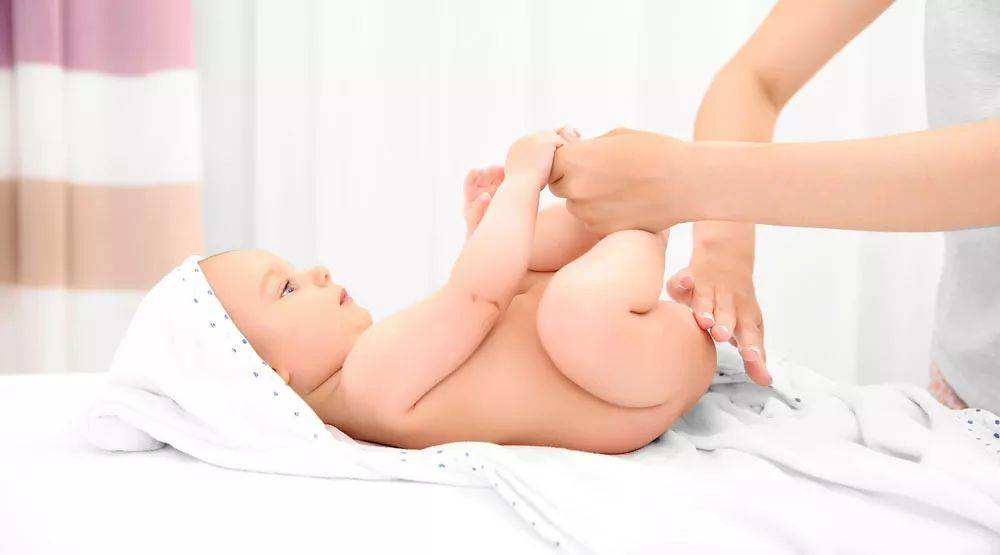
Many old mothers have such experiences: one second ago, watching Eva laugh harmlessly, like an angel, eager to take off the moon and give it to him. The next second, when she found Eva started defecating and urinating without warning, she wanted to throw him on the moon.
Some people say that before Eva learned to go to the toilet by herself, Baoma spent more time staring at their buttocks than at their faces…
However, although the precious mothers are already trying to protect their buttocks, the [red buttocks] may still find the baby without prevention.
Don’t worry, we’ll invite experts to give us advice.
What exactly is [Red Butt]?
The official name of red buttocks is [diaper dermatitis] or [diaper rash], which is one of the most common rashes in infants and young children. It usually occurs in the area where diapers are in direct contact with each other, and the peak period of onset is 9-12 months old.
Irritant diaper rash is the most common diaper dermatitis, mainly caused by urine irritation. Whether diapers or diapers, the absorption rate is difficult to reach 100%. Therefore, the baby’s small buttocks will inevitably come into direct contact with urine.
Residual urine and bacterial metabolites in excreta react chemically, which will irritate the baby’s skin.
Moreover, the skin of the baby’s small buttocks is very delicate, the stratum corneum is thinner, the skin in the diaper area is moist, often subjected to friction, and the barrier function is relatively weak. When the skin is difficult to resist urination and stool stimulation, diaper rash will follow.
In addition, the baby’s allergy to the ingredients in diapers or the diarrhea caused by long-term antibiotic treatment may also lead to rash in the diaper area.
According to the severity, diaper rash can be divided into light, moderate and severe three types. Mild diaper rash will be accompanied by blood vessel congestion and erythema. Moderate diaper rash children are prone to liquid exudation, skin ulceration and other symptoms. Severe diaper rash baby will appear a larger area of erythema, erosion, and even septicemia caused by bacterial infection into blood.
Generally speaking, diaper rash is not a difficult and complicated disease. Keeping the diaper area dry can effectively prevent it. If the care is in place, mild to moderate diaper rash can recover by itself.
However, when the baby has serious diaper rash symptoms or does not improve after nursing, the precious mothers must not take the baby lightly. They must take the baby to see a doctor in time and do a good job in the follow-up nursing.

According to these 4 suggestions, take care of the red fart [stifle it in the cradle]
1. Every time after cleaning the stool, to wash the baby’s buttocks in time. It is best to wash it with clear water. When wiping the diaper rash, it is recommended to dip it dry. The action should be gentle and wipe it from front to back to avoid urinary tract infection caused by wrong wiping methods. If you use wet wipes to clean, you must choose non-irritating products.
2. It is recommended to use diapers for your baby. Many parents think diapers are breathable and diapers will cover your skin, so when your baby has diaper rash, only diapers are used.
This idea is wrong. If it cannot be replaced in time, the urine on the diaper will stimulate the baby’s skin very much. Diapers can absorb urine and make the buttocks drier, but are more friendly to the skin. Especially when it cannot be replaced in time at night, the baby should be coated with hip cream before putting on diapers.
3. Change diapers frequently. No matter how good the diapers are, their water absorption will also drop after a long time, so this laziness must not be stolen. When changing diapers for the baby, remember to pay attention to observe whether the baby’s buttocks skin is red, swollen or damaged.
4. Hip care is recommended to use hip cream. Other messy items should not be smeared on children’s delicate buttocks casually. Hip cream can isolate urine and stool, protect baby’s delicate skin and prevent diaper rash.
The so-called “net red magic drug” is most likely added with non-conforming hormones. Regular use of hormones is no problem, but side effects may occur if it is used when it is unnecessary or for too long.
In addition, it is absolutely not allowed to apply sand to children’s buttocks, whether it is sun-dried or fried. It is unhygienic, susceptible to infection and dangerous!
How to choose buttock cream correctly?

When choosing hip protection cream, pay attention to the ingredient list and try not to choose hip protection cream containing spices, so as not to increase the probability of baby allergy.
The common effective ingredients of hip cream are zinc oxide and vaseline. Among them, zinc oxide has almost no irritation to the skin, can effectively isolate moisture and irritants, reduce the irritation caused by friction to the skin, and plays a certain drying role. Because of these advantages, zinc oxide has always been a star ingredient in the hip cream world.
When a child has diaper rash, the use of hip cream should be standardized, otherwise it is useless. When the baby’s hip skin is relatively healthy, a thin layer can be applied.
However, when the baby has diarrhea and other symptoms, or the fart turns red and diaper rash tends to develop, a thick layer should be applied to ensure the isolation effect, prevent the next urine from stimulating the hip skin and prevent the diaper rash from continuing to develop.
Every time you apply hip cream, you can see a white layer, which indicates that you have applied enough. Don’t be willing to give up, otherwise the baby will suffer all the time.
In short, choosing a high-quality hip cream and using it correctly can prevent accidents before they occur, help babies prevent diaper rash and relieve discomfort caused by light to moderate diaper rash.
